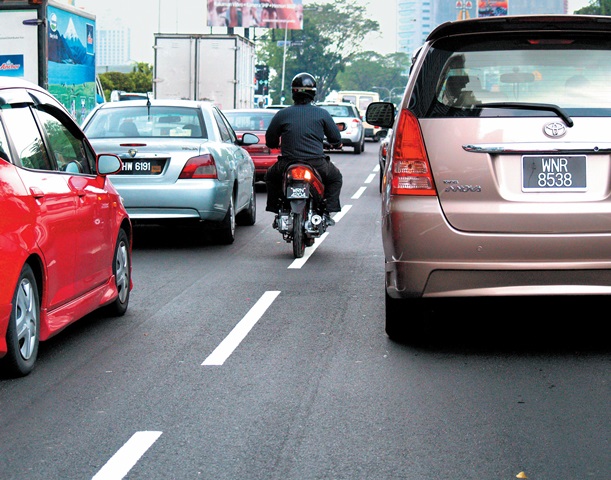
Consistently a prime target for expats’ ire, driving in Malaysia is fraught with frustration, but knowing what you’re getting into can sometimes help ease the pain. We take a tongue-in-cheek look at driving here, with some tips to help you cope.
“Great, I’m late for my meeting. Again.” “Stop squeezing in to my lane, lah!” “Thanks for the eleventh scratch on my car, Mr Motorcyclist.”
Let’s be honest, driving here in Malaysia can be quite frustrating. For many expats, it can come as quite a shock the first few times out driving on Malaysian roads, especially if you come from Western countries and compare it to your previous experiences. Since Malaysia used to be a British colony, they follow the British system of driving on the left-hand side of the road, but this certainly doesn’t mean Malaysian drivers follow the British road rules, too. At times on the roadways of Malaysia, it may seem that anything goes and it’s just every driver for himself. Driving here is not for the faint-hearted and can definitely take some getting used to. Here are a few tips that may help your time spent on Malaysian roads be, if not enjoyable, at least a bit easier to endure:
1. Motorcyclists
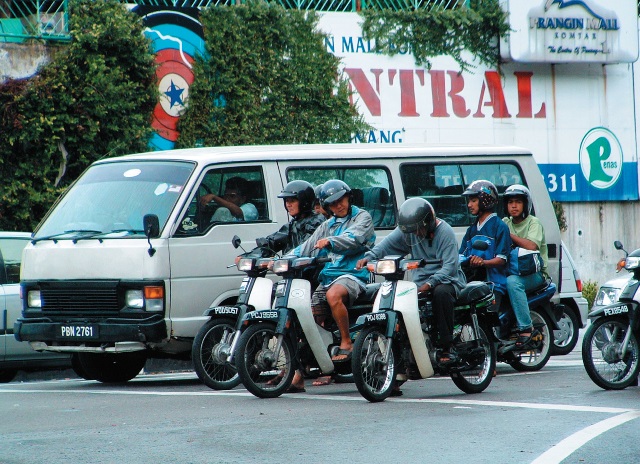
From powerful crotch-rockets to puttering old motorbikes carrying everything from LPG cylinders to a vast display of snacks and takeaway meals, the antics of motorcyclists usually feature near the top of any expat’s list of dislikes related to driving in Malaysia. It may seem some of the motorcyclists here feel like they own the road, or even behave like a bicyclist as they will drive on the sidewalks or drive the wrong way down one-way streets. Being the first one at the front of the traffic lights doesn’t mean you’ll be the first one to pass through the light, either, as motorcyclists squeeze through the tiny gaps between the multiple lanes of cars waiting behind you until find yourself settled behind an army of motorcycles. Changing lanes is oftentimes thwarted by an ill-timed motorcycle zipping by just as you see your chance open up. The only advice here is to always use your signal when changing lanes, and always assume there is a motorcyclist beside you, looking carefully and not forgetting your blind spot when making the move.
Nearly 60% of the deaths of drivers in Malaysia are motorcyclists and many of these are young, speeding cyclists. These daredevils will zigzag through lanes of traffic with unpredictable abandon, and will also cut in front of you to change lanes, so be prepared to brake hard if you want to avoid hitting an oblivious cyclist.
2. Tolls and Parking
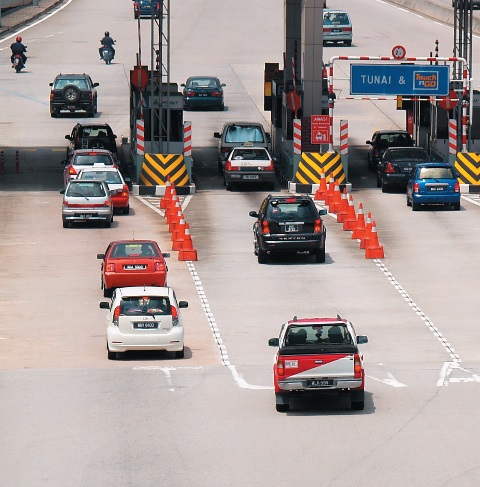
You will pass through plenty of tolls on the highways and the fastest, most convenient way of passing through is by either using the SmartTag or Touch ’n’ Go card. The Touch ’n’ Go card is a stored-value card for dedicated lanes with readers at window level. These cards can also be used to pay for parking in some shopping malls, which can be very handy if you don’t have small bills. Many times, a 10% surcharge is levied for the convenience.
SmartTag is a transponder device into which a Touch ‘n’ Go card is inserted for hands-free passage through dedicated toll lanes. However, it’s questionable how “smart” these things truly are, as you must slow down to nearly a stop, maintain a certain distance from other cars in what are often long queues, and still contend with a barrier gate. The transponder device is also a target for thieves, so there is a risk involved in leaving it attached to your windscreen. Really, the only obvious benefit is that you don’t have to lower your window to pass through the gate.
In areas with paid parking, the meters are usually in effect from 9am to 6pm unless otherwise stated and usually Sundays and Public Holidays are free. Meter rates can vary as it depends on the area you are in, but 50 sen per hour is common.
There are centralized pay stations rather than a meter at each parking space, so you’ll need to enter your car’s registration number, then feed the coins into the meter, and display the ticket it produces on your dashboard.
Parking fees and toll charges can really add up in a short time, but the seemingly high cost is somewhat mitigated by the lower price of partially subsidized petrol and relatively inexpensive labour costs for maintenance. Of course, this ignores the costs of repairing all those scuffs and scratches from manoeuvring your car through some dodgy, narrow carpark. Bumper scuffs from carpark mishaps are almost a badge of honour for KL-based cars, it seems!
3. Traffic Jams
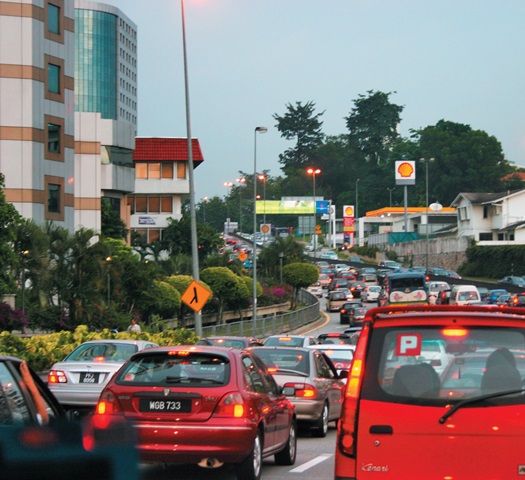
The bane of expats and locals alike, traffic jams can crop up in the city at any time, day or night. Caused by accidents, construction, rain, public holidays, weekends, Friday prayers, morning rush hour, the sheer volume of vehicles, or even the queue-jumping tactics of drivers at popular exits, there is never a shortage of reasons given for a massive snarl of traffic. In Greater KL in particular, the general rule seems to be “Any time is a good time for a jam!” The strong growth of a middle class in Malaysia over the last decade or two, coupled with very relaxed requirements and incredibly long repayment terms for vehicle loans has resulted in a dramatic increase in the number of cars on the nation’s roads – many of which were clearly never designed to handle the volume of traffic they see on a daily basis. There are currently over 23 million vehicles registered in Malaysia – a country with a population of only 29 million.
In any jam, unfortunately, the very worst nature of drivers comes out. Jumping the queue, ignoring lane markings altogether, driving on the shoulder, and doing anything and everything to get in front of the next car are all tactics featured prominently. The only advice worth anything in a Malaysian traffic jam is don’t be passive. Local drivers are incredibly opportunistic and will seize even the tiniest chance to overtake or cut in front of you. If you stop and let one person go in front of you, be prepared for the person behind them to try to take advantage of your kindness, too. And the one behind them, as well.
4. Highways and Major Roads
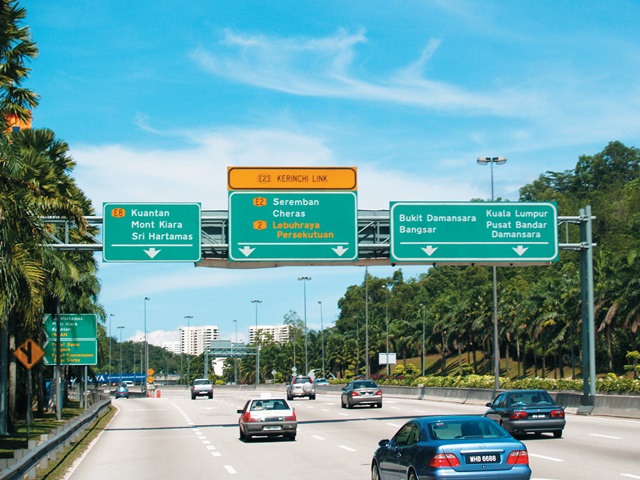
Though the quality of highways in Malaysia is quite good, at times, your fellow drivers can make any journey a nerve-wracking one. On a three-lane highway, it’s not uncommon to find painfully slow lorries in the left lane, speed demons in the right, and anything else in the centre. Motorcycles and other vehicles driving in the emergency lane/shoulder is fairly normal, too. If you spend any time in the right-most lane, even at speeds well over the limit, it won’t be long before someone is right on your bumper, usually flashing the headlights. It doesn’t matter how fast you’re driving, someone will be there who wants to go faster.
At times, however, away from the major population centres and on some lesspopular routes, driving on Malaysia’s highways can be a truly enjoyable experience. There are long stretches of well-maintained and oftentimes relatively new roads with not much traffic (such as highway 194 up north from Changlun over to Kuala Perlis on the coast, for example), and when you find yourself on one of these highways, it can actually be a relaxing, scenic, and interesting drive.
On roads without controlled access, however, a common practice is for drivers not to stop when coming out of a side road onto the main road, which can be quite dangerous if high speeds are involved. It seems Malaysian drivers ask themselves before doing this, “Can that driver possibly stop before hitting me if I pull out in front of him?” and if the answer is anything stronger than “probably so,” then they’ll continue on, so be ready when a car just suddenly pops out of a side street without braking. Rural two-lane roads and highways can be especially prone to this type of surprise, so be aware.
For some drivers, the proliferation of long-distance buses can be another problem on the highway. The skill and experience of drivers is highly variable, something reflected in the number of bus accidents that happen every year. However, it must be said that there are plenty of competent and conscientious bus drivers on Malaysian roadways, too, and travelling by bus here isn’t nearly as risky as it can be in other developing countries. Understandably, buses operating on the North-South Highway seem to be less prone to accidents than those plying the curvy mountain roads to the Highlands or over the Karak Highway.
5. Traffic Lights
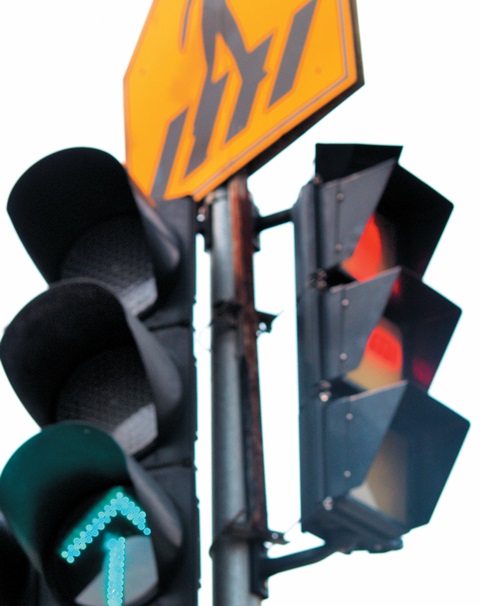
Traffic lights here in Malaysia don’t quite have the same meaning as those in other countries. Green of course is the same – “go” – but amber and red are different. Amber seems to mean “don’t slow down, but go faster instead,” and red periodically is taken as only a suggestion, appearing to mean “stop if there is traffic coming or if there’s a policeman on the corner.” Motorcyclists are especially notorious for ignoring traffic lights with total impunity. One serious flaw in traffic system management is that lights tend to stay red too long, allowing a massive number of cars to pile up waiting for them to change, then subsequently stay green too long,inundating the road with a crush of traffic it’s ill-designed to handle. Lights are meant to be traffic management tools, and here, they are seldom used well in that regard.
Though it seems to be fairly benign advice, it really can be liberating at times to just make a conscious decision to go with the flow and choose not get irritated by the baffling road rules, confusing signage, and bizarre and decidedly opportunistic habits of local drivers. Expect the unexpected, learn the alternate routes when possible, and get familiar with the peculiar way of driving here. And if there’s one positive thing about driving here, particularly in KL or Penang, blaming a traffic jam (genuine or not) for any late arrival is always accepted with a courteous and knowing nod.
Written by Mijan Magpantay and Chad Merchant.
Homepage Highlight Photo credit: stratman² (2 many pix!) / Foter / CC BY-NC-ND
Source: The Expat Magazine August 2014
Read more:
What are your thoughts on this article? Let us know by commenting below.No registration needed.
"ExpatGo welcomes and encourages comments, input, and divergent opinions. However, we kindly request that you use suitable language in your comments, and refrain from any sort of personal attack, hate speech, or disparaging rhetoric. Comments not in line with this are subject to removal from the site. "






















